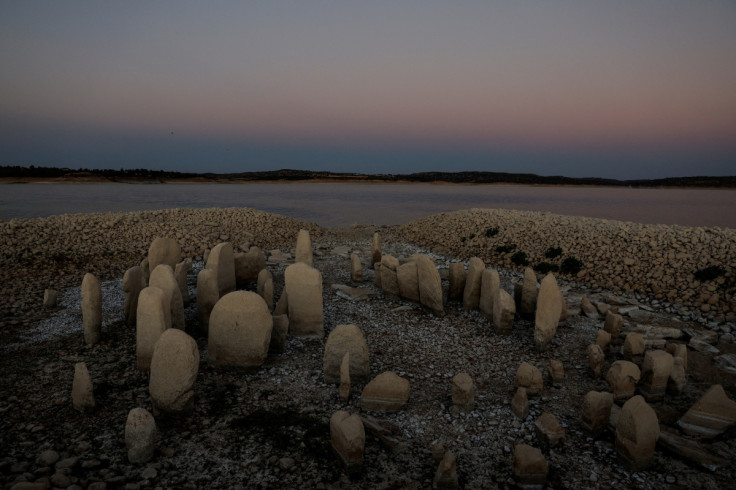Ancient monument resurfaces in Spain as drought shrinks reservoir
The site, officially known as the Dolmen of Guadalpera, is believed to date back to 5000BC.
The drought in Spain has not only caused bodies of water to almost run dry, but has also caused several historic monuments to re-emerge from their watery graves.
The latest in the series of discoveries made possible by the drought is a massive megalithic complex. The structure was discovered on an islet near a town called Peraleda de la Mata in the country's western Extremadura region.
The ancient stone circle was initially discovered by archaeologists in 1926, but it had been submerged underwater since 1963. The construction of a dam to create the Valdecañas reservoir had flooded the Dolmen of Guadalperal.
Several artifacts such as axes, flint knives, ceramics, and a copper punch were also recovered from the site in 1963.
The prehistoric site, officially known as the Dolmen of Guadalpera, is believed to date back to 5000BC. It is essentially a grouping of 150 large vertical granite stones (called orthostats) arranged in an oval space.
People had earlier seen its tips poking out of the reservoir. However, this is the first time that the structure has fully resurfaced since 1963.
"It's a surprise, it's a rare opportunity to be able to access it," archaeologist Enrique Cedillo from Madrid's Complutense University told Evening Standard. NASA's Earth Observatory also released two satellite images of the Valdecañas Reservoir that showed the structure in all its grandeur.

Tourists have already started swarming the place, also dubbed the Spanish Stonehenge, on boats run by private firms. It takes a 2-hour walk to reach the site after a boat ride.
A report in Atlas Obscura claims that the site was most likely used as a solar temple, a trading post along the Tagus River, or a burial enclave. However, the exact purpose of the site remains unknown. The Spanish government is now developing a plan to protect the site for future generations.
The prolonged dry spell and extreme heat have caused Spain's reservoirs to run at just under 36% capacity. The dry weather is likely to continue into the autumn, per Spain's meteorological service AEMET.

© Copyright IBTimes 2025. All rights reserved.






















